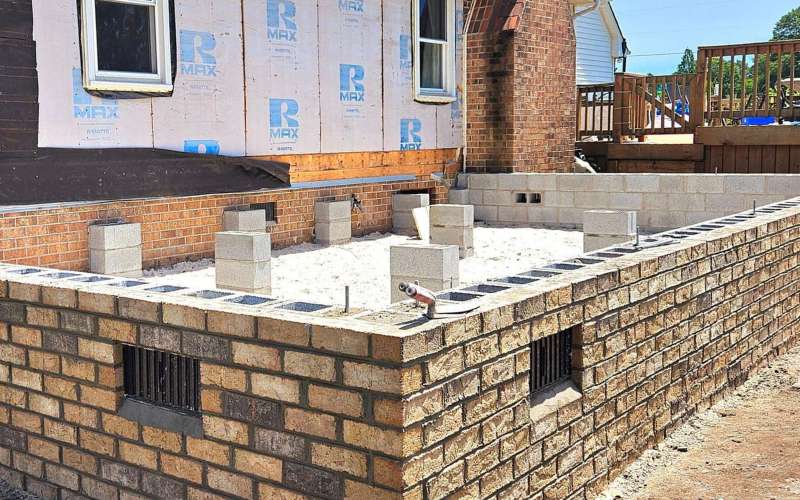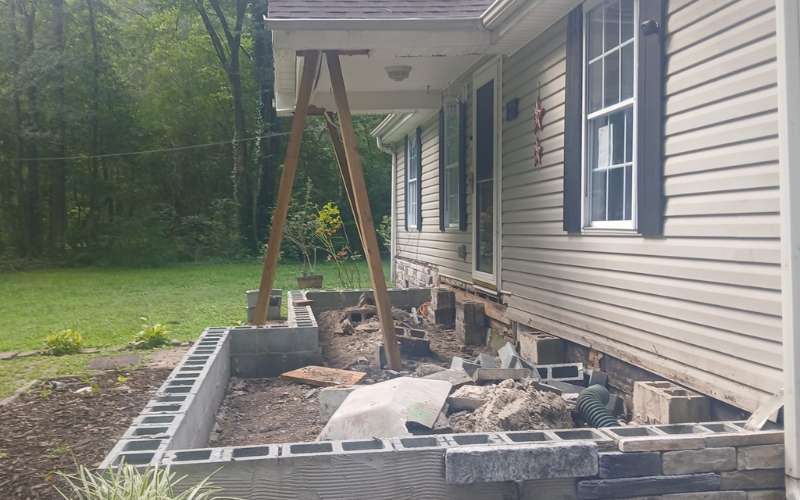Are you torn between choosing a concrete slab or stone pavers for your patio? Making the right decision depends on several factors. The cost comparison between concrete slab vs. stone paver patios can help homeowners determine which option suits their needs and budget. This guide will break down the expenses, benefits, and drawbacks, giving you the insight needed to make the best choice for your outdoor space.
Cost Evaluation: Concrete Slab or Stone Paver for Your Patio
When planning a new patio, choosing between a concrete slab and stone pavers involves evaluating costs, maintenance, durability, and aesthetics. Both options have pros and cons that can impact your decision. Let’s dive deeper into these aspects to help you decide which option is best for your home.
· Initial Installation Costs
Concrete slabs are generally more affordable to install compared to stone pavers. A basic concrete slab costs between $6 to $15 per square foot, including materials and labor. Stone pavers, however, range from $10 to $30 per square foot, making them a more expensive option. The cost varies depending on the type of stone, its quality, and installation complexity. If your budget is tight, a concrete slab might be more suitable.
· Maintenance Costs Over Time
Maintenance is an essential factor to consider. Concrete slabs can crack over time due to temperature changes or ground movement, which may require patching or resurfacing. Stone pavers, on the other hand, may shift or become uneven but are easier to replace individually. Regular cleaning and occasional sealing are needed for both types, but pavers often require more frequent attention to keep weeds and moss at bay. Despite these needs, many homeowners find the long-term costs of stone pavers to be worth the initial investment.
· Durability and Longevity
Durability plays a crucial role in choosing a patio material. Concrete slabs are strong and durable but can crack and show wear over time, especially in freeze-thaw climates. Stone pavers are more flexible and can last longer as they do not crack easily. Each paver is separate, so the natural shifting of the ground does not cause significant damage. With proper care, stone pavers can last up to 50 years, whereas concrete may need major repairs or replacement in 25 to 30 years.
· Aesthetic Appeal and Design Flexibility
Design flexibility and aesthetics are also crucial in your decision-making. Concrete slabs offer limited design options, mostly in the form of stamped or stained designs. Stone pavers come in various shapes, sizes, colors, and materials like brick, granite, or limestone. This diversity allows for more creativity in design, helping you match your patio to your home’s style and landscape. If a unique and customized appearance is important, stone pavers provide a greater range of options.
· Resale Value and Investment Return
Homeowners often consider the potential return on investment (ROI) when upgrading outdoor spaces. Patios made with stone pavers generally offer a better ROI compared to concrete slabs. The visual appeal, longevity, and quality associated with stone pavers can increase the value of your home. While concrete slabs are practical and functional, they might not add the same aesthetic and monetary value. If you plan to sell your home in the future, investing in stone pavers could be more advantageous.
· Which One Is Right for You?
Choosing between a concrete slab and stone paver patio depends on your budget, desired aesthetic, maintenance capacity, and long-term plans. Concrete slabs are cost-effective and suitable for those on a budget or with a simpler patio design in mind. Stone pavers, while initially more expensive, offer durability, aesthetics, and a better return on investment. By weighing these factors, you can make an informed choice that meets both your needs and your vision for your outdoor space.
Make the Right Choice for Your Patio
When deciding between a concrete slab or stone paver patio, consider the upfront costs, maintenance, durability, and style. Both options offer unique benefits and challenges. If you need further guidance on selecting the best patio for your home, contact us today for a free consultation. Let’s help you create the perfect outdoor space!



